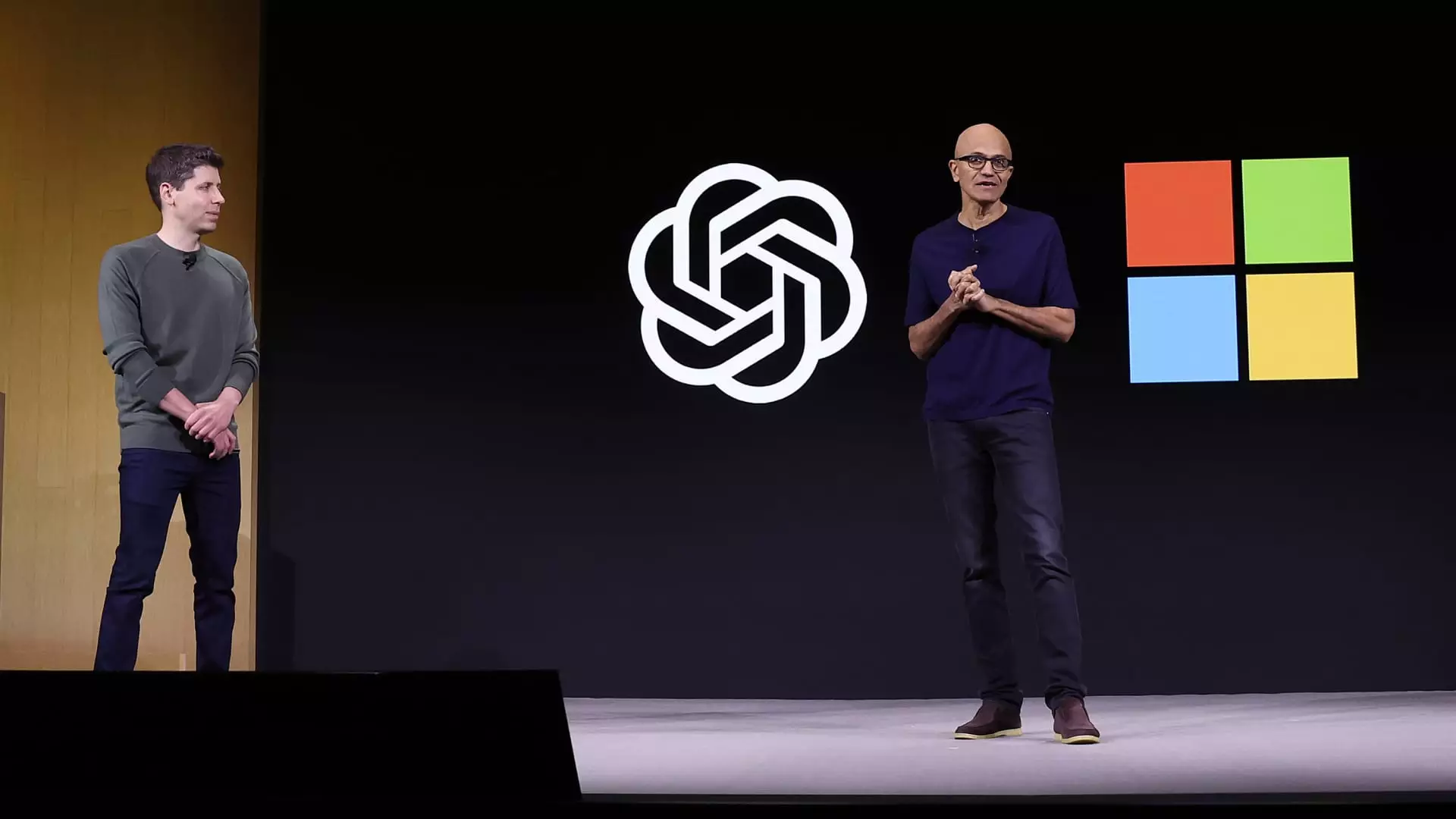Microsoft’s recent foray into the world of artificial intelligence, particularly through its substantial investment in OpenAI, has sent ripples across its financial landscape. Announced during the latest quarterly earnings report, CFO Amy Hood indicated that the company anticipates a striking $1.5 billion impact on its income, largely attributed to OpenAI’s financial woes. This situation sheds light on a broader narrative surrounding investments in pioneering technologies that promise immense potential but also carry significant risks. OpenAI has banked close to $14 billion from Microsoft, given its promising venture in generative AI with products like ChatGPT that have captivated global attention.
Despite these groundbreaking developments, OpenAI is facing staggering losses, projected to reach $5 billion against anticipated revenues of only $4 billion this year. Such a disparity raises eyebrows about the sustainability of the investment for Microsoft and whether those billions will translate into long-term profitability. Hood’s remarks underline a cautious optimism, as she reassured that these losses are calculated under the equity method, which reflects Microsoft’s proportional stake in OpenAI’s operations. Yet, this reassurance comes amidst fears of slower growth that could dampen the momentum generated by AI innovations.
Microsoft’s strategic partnership with OpenAI has validated its commitment to generative AI. However, amid the struggles, the tech giant is strategically diversifying its investment portfolio. This has become evident in its recent decision to allow GitHub to implement competing AI models from Google and Anthropic for its Copilot Chat feature, instead of relying solely on OpenAI’s offerings. This pivot reflects an understanding of the volatile nature of the AI sector and the necessity to hedge against uncertain returns.
Moreover, although Microsoft continues to integrate OpenAI’s technologies into its suite of products, there is an acute awareness of the delicate balance between investing in innovation and managing financial risk. The company’s decision to partake in a significant funding round for OpenAI, which valued the AI startup at $157 billion, speaks to its belief in the potential of artificial intelligence to redefine industry standards, despite the current fiscal downturn OpenAI is facing.
As Microsoft stands firm in its partnership with OpenAI, rival companies are not idly watching the developments unfold. Amazon, for example, has invested around $4 billion in Anthropic, an AI venture that is home to several former OpenAI founders. This arms race amongst tech giants highlights not only the popularity of AI but also the inherent risks that each faces. While these substantial investments aim at capturing the future of AI, they also serve as a reminder of how precarious such ventures can be, especially amidst mounting losses and rapidly changing technological landscapes.
Microsoft’s investment trajectory appears fraught with complexities — teetering between extraordinary growth potential and significant financial exposure. As the company navigates through the waves of artificial intelligence, it remains to be seen how effectively it can transform its ambitious investment into sustainable profit, as industry competitors similarly pursue their own AI aspirations. The true challenge lies not just in innovation, but also in the ability to adapt strategically in an ever-evolving landscape.


Leave a Reply